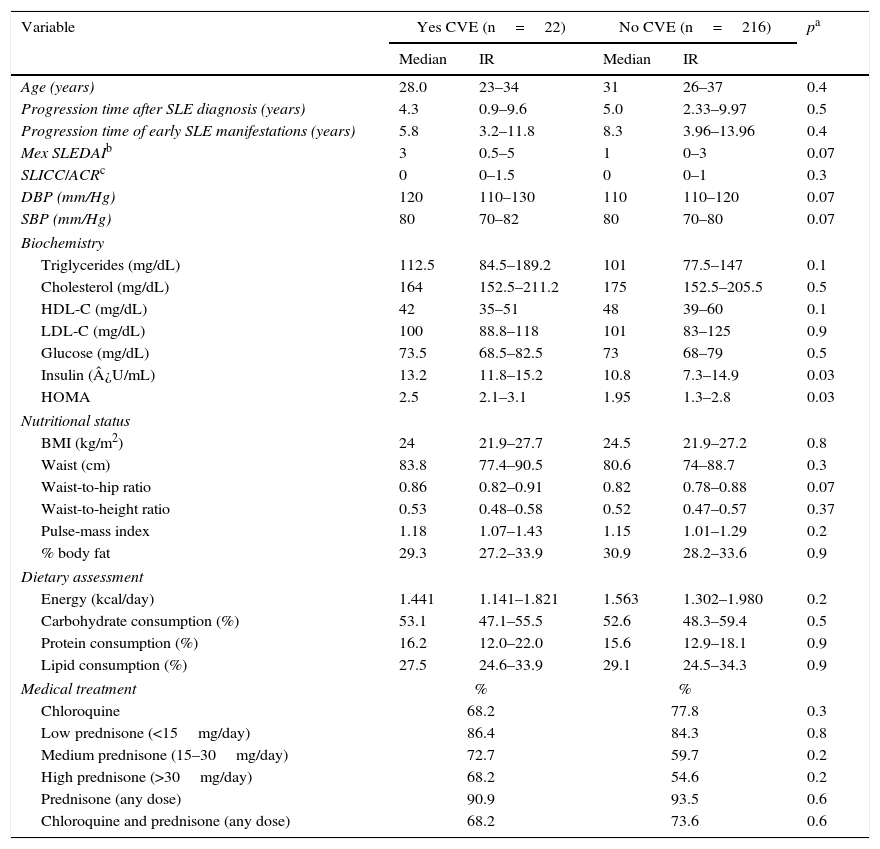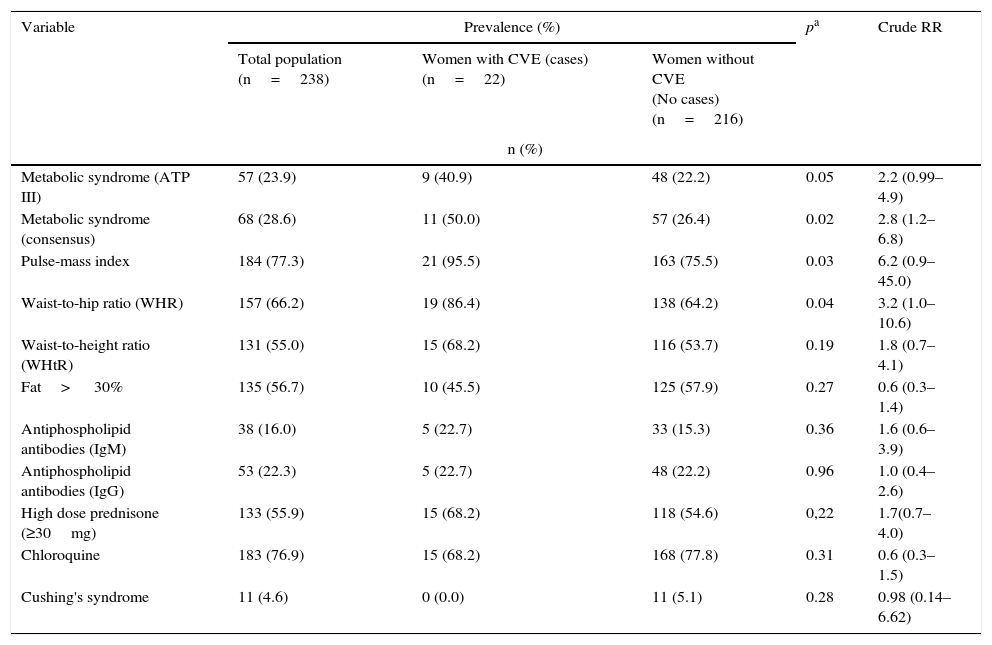Patients with systemic lupus erythematosus (SLE) have 3times the risk of death compared to the rest of the population, with cardiovascular events (CVD) being one of the main causes. Indices such as waist-height (W-Ht I), waist-hip (W-Hp I) and pulse-mass (PMI) predict CVD, though the behaviour is unknown in patients with SLE. The aim of this study was to determine the prognostic value of PMI in the development of CVD in premenopausal women with SLE.
MethodologyCohort study. Included were premenopausal women with SLE without prior CVD; excluded were those patients with antiphospholipid syndrome (APS), pregnancy, thyroid disease, recent liposuction, and chronic kidney disease. Exposure variables were: PMI, W-Ht I, W-Hp I and metabolic syndrome at onset of the cohort. Considered confounding variables were time of evolution, disease activity, cumulative damage and treatment. Through semi-annual appointments, accident and emergency admittance and hospitalization records the CVD were screened. Analysis was performed with Cox for proportional hazards and survival with Kaplan Meier.
ResultsWe included 238 women with a median age of 31 (18–52) years, with a follow-up of 8years. We identified 22 (9.6%) cases of CVD. In the Cox proportional hazards analysis, the prognostic variables were: PMI with HR=8.1 (95% CI: 1.1–65), metabolic syndrome with 2.4 (95% CI: 1–5.8), cumulative damage with HR=1.5 (95% CI: 1.1–2.2) and body fat percentage HR=2.8 (95% CI: 1.1–6.9).
ConclusionsThe PMI is a better predictor factor of CVD in women with SLE.
Los enfermos de lupus eritematoso generalizado (LEG), comparados con el resto de la población, tienen 3 veces más riesgo de muerte; los eventos cardiovasculares (ECV) son una de las principales causas. Existen índices como cintura-talla (ICT), cintura-cadera (ICC) y el pulso-masa (IPM) que pronostican ECV; su comportamiento se desconoce en el LEG. El objetivo de este estudio fue determinar el valour pronóstico del IPM en el desarrollo de ECV en mujeres premenopáusicas con LEG.
MetodologíaEstudio de cohorte. Se incluyó a mujeres premenopáusicas con LEG, sin ECV previo; se excluyó a las pacientes que presentaran síndrome antifosfolípido (SAF), que estuvieran embarazadas, con enfermedad tiroidea, liposucción reciente y enfermedad renal crónica.
Las variables de exposición fueron: IPM, ICT, ICC y síndrome metabólico al momento del ingreso a la cohorte. Se consideraron como variables confusoras el tiempo de evolución, actividad de la enfermedad, daño acumulado y tratamiento. Por medio de citas semestrales, registro de urgencias y hospitalización, se midieron los ECV.
Se utilizó análisis de riesgos proporcionales de Cox y sobrevida por Kaplan–Meier.
ResultadosSe incluyó a 238 mujeres con mediana de edad de 31 años (18-52), con seguimiento de 8 años. Se presentaron 22 casos (9,6%) de ECV. En el análisis de regresión de Cox las variables pronósticas fueron: IPM con HR=8,1 (IC95%: 1,1-65), síndrome metabólico con 2,4 (IC95%: 1-5,8), daño acumulado con HR=1,5 (IC95%: 1,1-2,2) y porcentaje de grasa corporal con HR=2,8 (IC95%: 1,1-6,9).
ConclusionesEl IPM es un buen factor pronóstico de ECV en mujeres con LEG.










